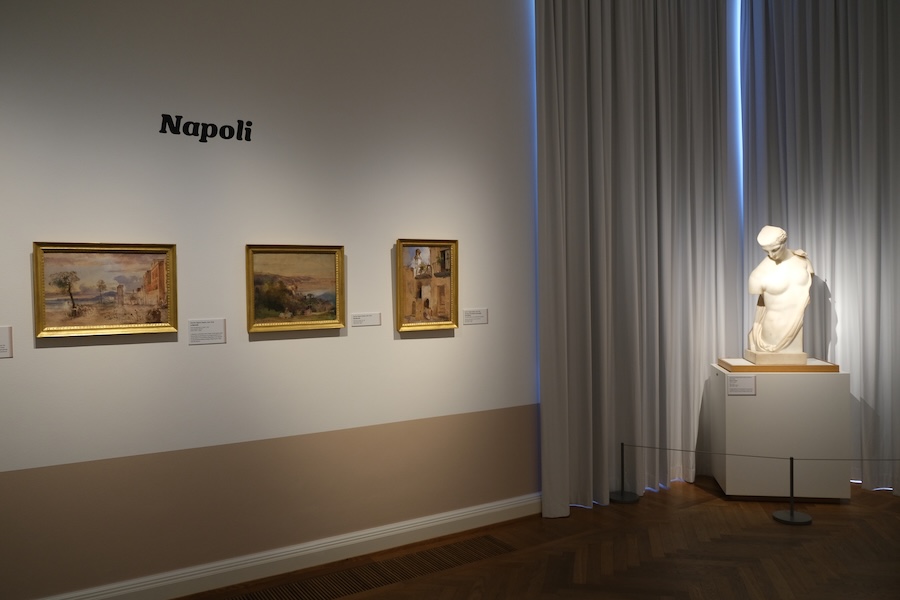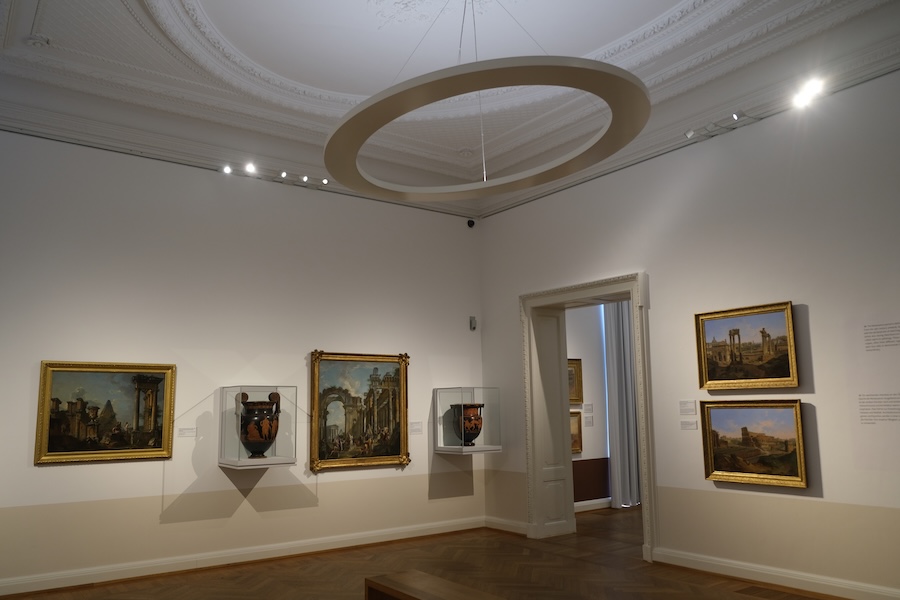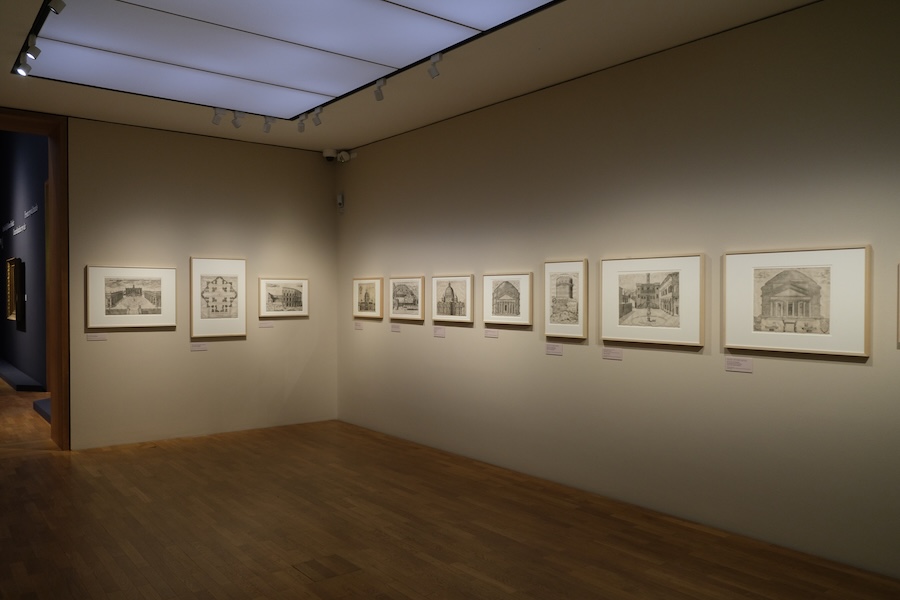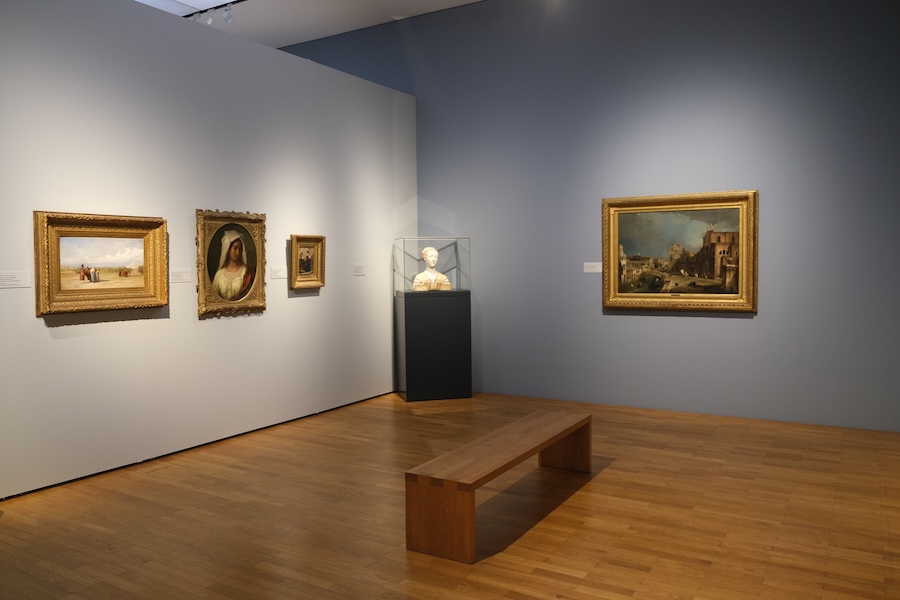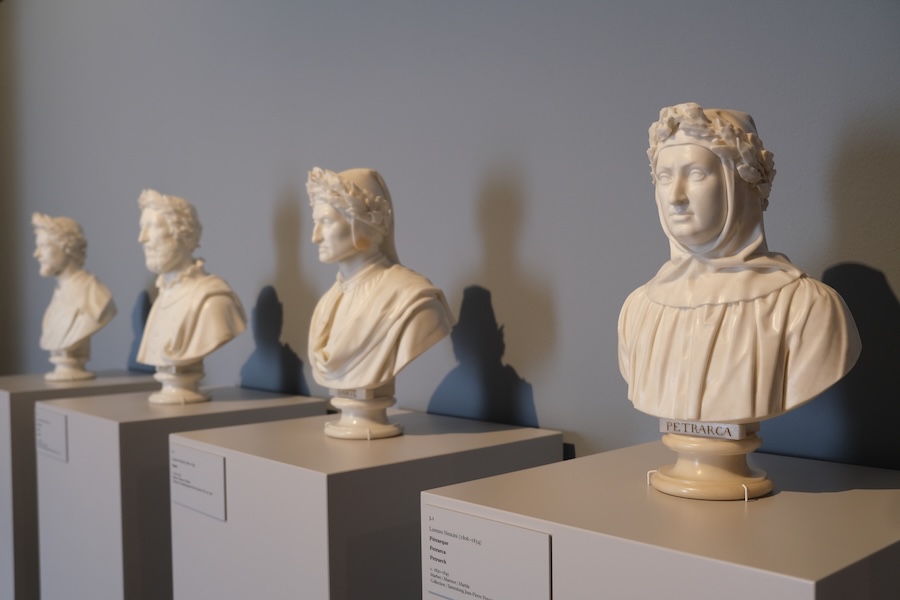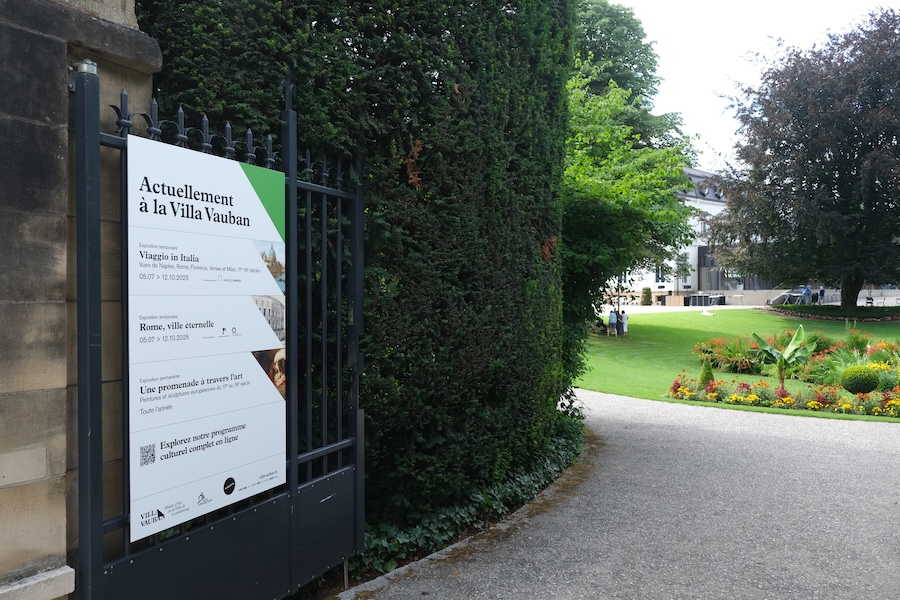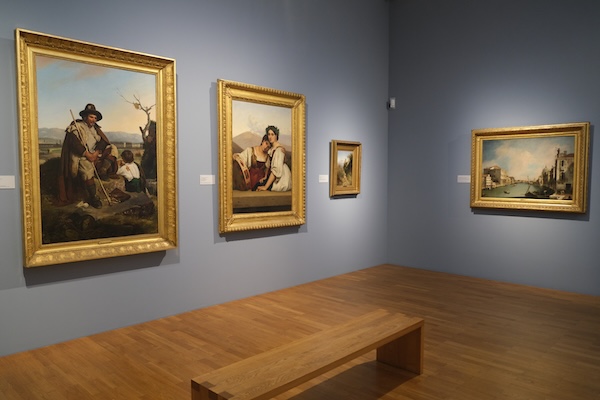 Credit: Steven Miller, Chronicle.lu
Credit: Steven Miller, Chronicle.lu
From now until Sunday 12 October 2025, art museum Villa Vauban in Luxembourg Ville is hosting “Viaggio in Italia”, an exhibition featuring 17th to 19th century artworks of Naples, Rome, Florence, Venice and Milan.
The exhibition, featuring works from the collections of the Gallerie d’Italie, the museums of the Intesa Sanpaolo Bank, covers three centuries and includes works from Italian, Dutch, French and British painters.
Highlights include pieces from Naples’ Giacinto Gigante (1806-1876), whose 19th century tempera, pencil and watercolour works show everyday life in the city through an almost blurred lens, using light and form to provide definition. In contrast, pieces by fellow Naples artists, Francesco Mancini (1830-1905) and Gennaro Luciano (1883-1959) use colour and contrast to display the space and texture of Napoleonic interiors of the time.
In contrast, the stunningly detailed representations of Greco-Roman architecture by Giovanni Volpato (1753-1803), Giovanni Ghisolfi (1623-1683) and Denise Duchateau (1919-1973), brought to life with oils and mixed media, use deep, thick colours to give weight and substance to their ancient Roman subjects. Meanwhile, Gaspar Adriaensz van Wittel’s (1652-1736) panoramic oil works bring to life the size and scale of ancient Roman piazzas, monuments and buildings, often dwarfing the city dwellers of Rome depicted within the frame
Elsewhere, the works of Luigi Garibbo (1782-1869) and Thomas Patch (1725-1782) offer an inward-looking view of Florence from its surrounding landscapes. The scale of the city held to account by towering Italian skies.
Continuing the Italian theme through the museum are two additional exhibitions, “Dream Location in Italy” and “Rome, the eternal city”.
The first features a mix of landscape, city scenes and portraiture which depict the period between 1723 and 1883.
Among the highlights are “View from Campo San Vio at the Grand Canal” (1723) by Giovanni Antonio (1696-1768), in which the unique light of the late afternoon sun is captured as it filters and reflects off the canal and stonework of the surrounding buildings, highlighting the vibrancy of the daily undertakings of the regal figures, sailors, tradespeople and residents as they go about their lives.
In “Young Neapolitans” (1835) by Guillaume Bodinier (1795-1872), the relaxed pose of two young women is flanked by the ominous Mount Vesuvius, along with a reminder of the fragility of life in the form of a crypt depicted in the background. Here, the artist has used the texture of the canvas to draw out the detail of the women's jewellery and costumes. The rich creams and maroons resting against the olive coloured landscapes rising up to the smoking volcano.
In Alphée de Regny’s (1799-1881) “View of the harbour of Naples” (1830-1840), again the hustle and bustle of Italian life is illuminated in golden Italian sunlight, reflecting and unveiling the colours of the city’s inhabitants and contrasting against the daytime blue of the sky.
This exhibition also includes a variety of marble and plaster cast busts depicting various figures from the 15th to 19th centuries.
In the galleries of the lower floor, the other exhibition features numerous etchings and engravings of Roman landmarks. Produced in the 15th century, their architectural representation of buildings such as St Peter’s Basilica and The Pantheon reveal the intricate details of their stonework, while the almost postcard-esque 17thcentury etchings of various castles and villas provide a more romantic insight into Roman life and the buildings which dominated the city and surrounding landscape.

